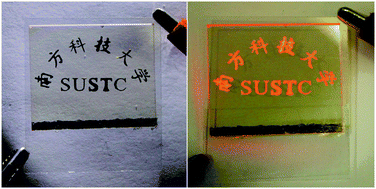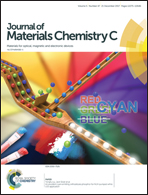Selective wetting/dewetting for controllable patterning of liquid metal electrodes for all-printed device application
Abstract
Liquid metals based on eutectic gallium–indium (EGaIn) alloys are promising printable electrode materials for various printed devices such as light-emitting diodes or solar cells. To achieve a controllable and fine patterning of the EGaIn electrodes, herein, a facile bottom-up, additive technique has been developed by manipulating wetting/dewetting of the substrate. The substrate is first dewetted by coating a hydrophobic layer; then, to selectively dewet the substrate, the coated hydrophobic layer is patterned by laser ablation. EGaIn, which is painted onto the substrate, can only adhere to the wetting regions and thus can perfectly copy the patterns of the wetting regions. Via this method, high-resolution EGaIn patterns with a line width smaller than 100 μm can be obtained. Using the patterned EGaIn electrodes, all-printed quantum dot light-emitting diodes were successfully demonstrated. The proposed method offers a feasible route for fast patterning of EGaIn and thus allows for inexpensive, rapid fabrication of various devices without the need of costly vacuum processing.

- This article is part of the themed collection: 2017 Journal of Materials Chemistry C HOT Papers


 Please wait while we load your content...
Please wait while we load your content...